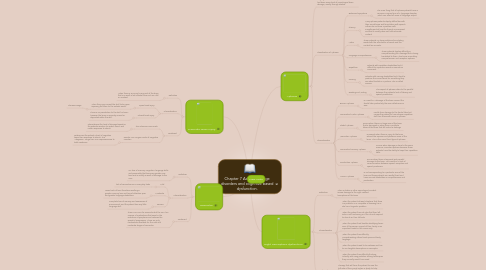
1. Traumatic Brain Injury
1.1. Definition
1.1.1. When there is an injury to any part of the brain that is a result of an outside force such as a fall or accident
1.2. Characteristics
1.2.1. Open-head injury
1.2.1.1. When the injury caused the skull to be open exposing the brain to the outside world.
1.2.1.1.1. Phineas Guage
1.2.2. Closed-head injury
1.2.2.1. There is no penetration to the skull or brain, however the brain is seriously moved or disjointed within the skill.
1.3. Treatment
1.3.1. The Glascow Coma Scale
1.3.1.1. Characterizes the level of damage based on the patients reaction to verbal, visual, and motor responses to stimuli
1.3.2. Rancho Los Amigos Levels of Cognitive Function
1.3.2.1. Determines the patient's level of cognition based ton responses to stimuli. The "diagnosis" range from non-responsiveness to total assistance
2. Dementia
2.1. Definition
2.1.1. Is a loss of memory, cognition, language skills, and personality that becomes greater over time and is usually a result of damage to the CNS
2.2. Characteristics
2.2.1. Mild
2.2.1.1. lack of remembrance in every day tasks
2.2.2. Moderate
2.2.2.1. Loses track of time therefore resulting in greater memory loss and loss of attention span and greater language disabilities
2.2.3. Servere
2.2.3.1. Complete loss of memory and awareness of environment, and the patient has very little language skill.
2.3. Treatment
2.3.1. There is no cure for Dementia but the FDA has a series of medications that assist in the reduction of symptoms and reduces the speed of progression. There are only medications available for the mild and moderate stages of Dementia
3. New node
4. Right Hemisphere dysfunction
4.1. Definition:
4.1.1. When a stroke or other neurological incident causes damage to the right cerebral hemisphere of the brain
4.2. Characterisitcs:
4.2.1. When the patient refuses to believe that there is a problem or is incapable of knowing he or she has a linguistic problem
4.2.2. When the patient has not idea that their left side is not functioning or if the do not respond to stimuli on their left side
4.2.3. When the patient had trouble identifying faces, even if the person is apart of their family or an important model in the community
4.2.4. When the patient has difficulty comprehending others facial ques and body language
4.2.5. When the patient need to be verbose and has to use tangible descriptions or examples
4.2.6. When the patient has difficulty thinking critically and using problem solving techniques they normally would have used
4.3. Treatment:
4.3.1. Therapy that will force the patient to uses the left side of their visual cortex or body to help them recognize that it is there. Also using exercises to get the patient thinking critically and abstractly
5. Aphasia
5.1. Definition: it is a communication disorder that is acquired after and individual has substantial language abilities. It is presented after there had been some kind of neurological brain damage; mostly through strokes.
5.2. Classification of Aphasia:
5.2.1. Behavioral symptems
5.2.1.1. The main thing that all aphasia patients have in common is some form of a language disorder. Which can effect all areas of language output.
5.2.2. Fluency
5.2.2.1. Many aphasia patients display difficulties with their smoothness and formulation with speech. Others do not have a problem with smoothness but how the though is processed and that it usually does not have accurate content
5.2.3. Motor
5.2.3.1. These patients my have problems formulating words with the articulation of words and the content be accurate.
5.2.4. Language Comprehension
5.2.4.1. These patients display difficulty in comprehending the message that is being translated to them. also know as auditory comprehension and receptive aphasia.
5.2.5. Repetition
5.2.5.1. Patients with repetition disabilities find it difficult to reproduce words or sounds on command.
5.2.6. Naming
5.2.6.1. Patients with naming disabilities find it hard to produce the correct word for something they are asked to state in a picture. This is called anomia.
5.2.7. Reading and Writing
5.2.7.1. This aspect of aphasia refers to the parallel between the patient's lack of literacy and speech production.
5.3. Characteristics
5.3.1. Broca's Aphasia
5.3.1.1. is a result in a damage of the brain around the frontal lobe particularly the area called Broca's area
5.3.2. Transcortical Motor Aphasia
5.3.2.1. results from damage to the frontal lobe but causes the patient to have sharper repetition skill than those with Broca's Aphasia.
5.3.3. Global Aphasia
5.3.3.1. occurs when there is a large area of the brain that is damaged or when there is multiple lobes of the brain that fall victim to damage
5.3.4. Wernicke's Aphasia
5.3.4.1. is present when there is injury to the brain around the superior and posterior areas of the brain. This is the more fluent type of aphasia.
5.3.5. Transcortical Sensory Aphasia
5.3.5.1. Occurs when damage is done to the same areas as Wenicke's aphasia however these patients have the ability to keep their repetition skills.
5.3.6. Conduction Aphasia
5.3.6.1. occurs when there is temporal and parietal damage to the brain. This results in a lack of communication between speech receptors and speech producers.
5.3.7. Anomic Aphasia
5.3.7.1. is not corresponding to a particular area of the bran and these patients are usually fluent and have minimal disabilities in comprehension and production.
